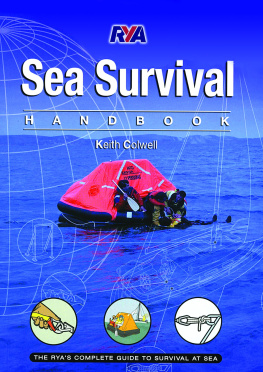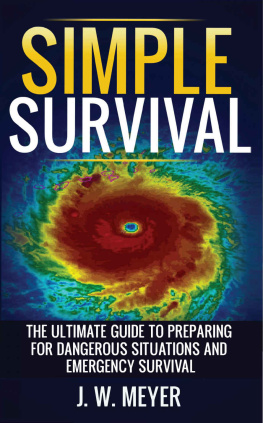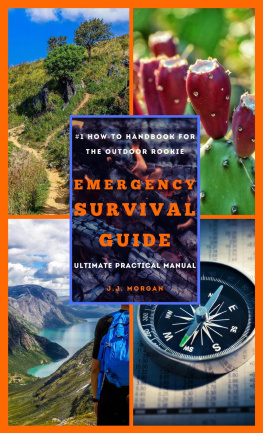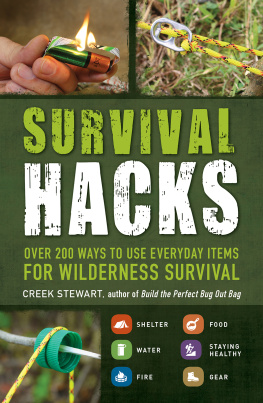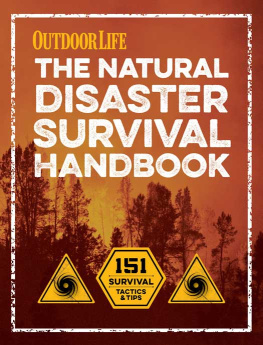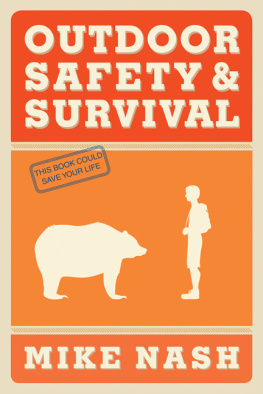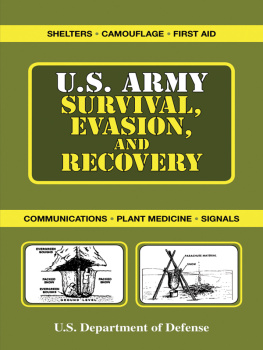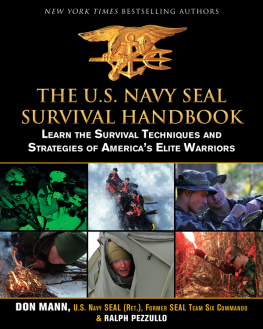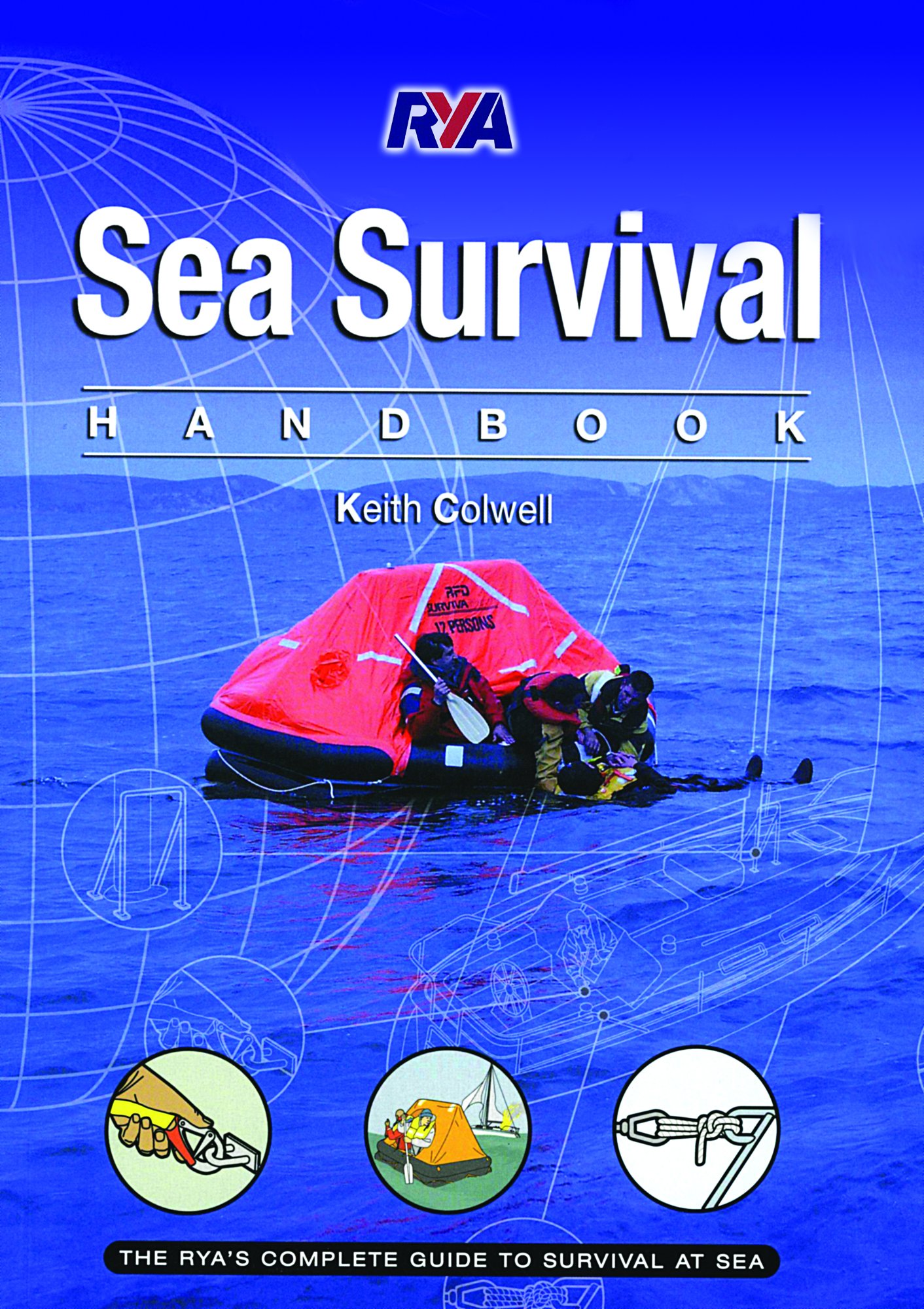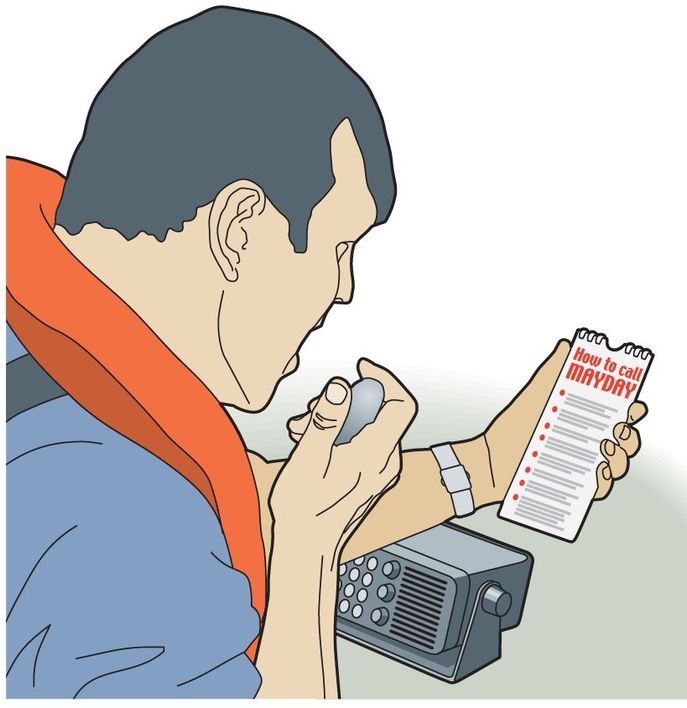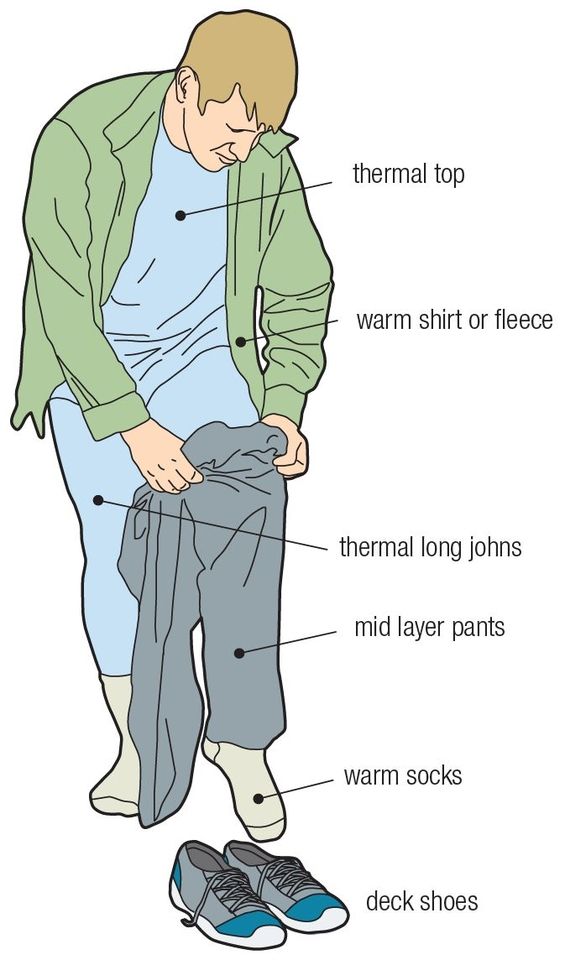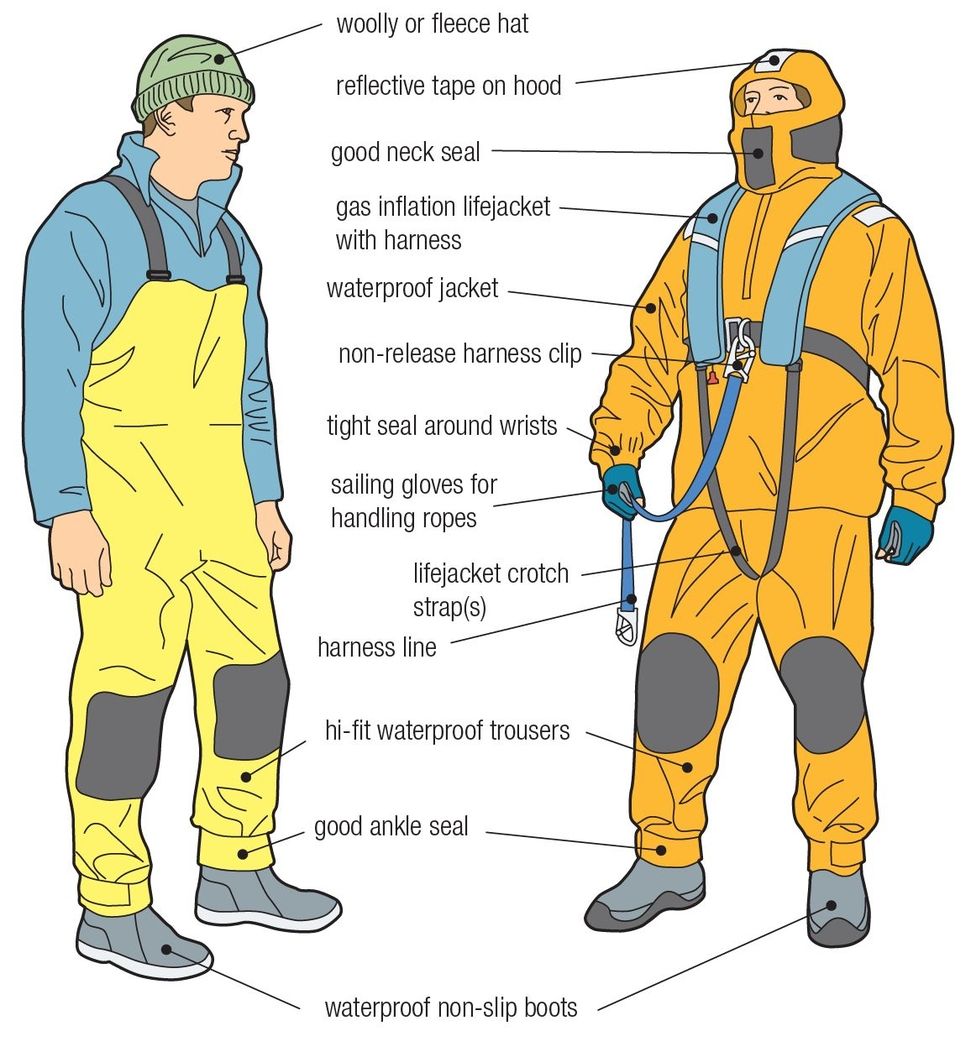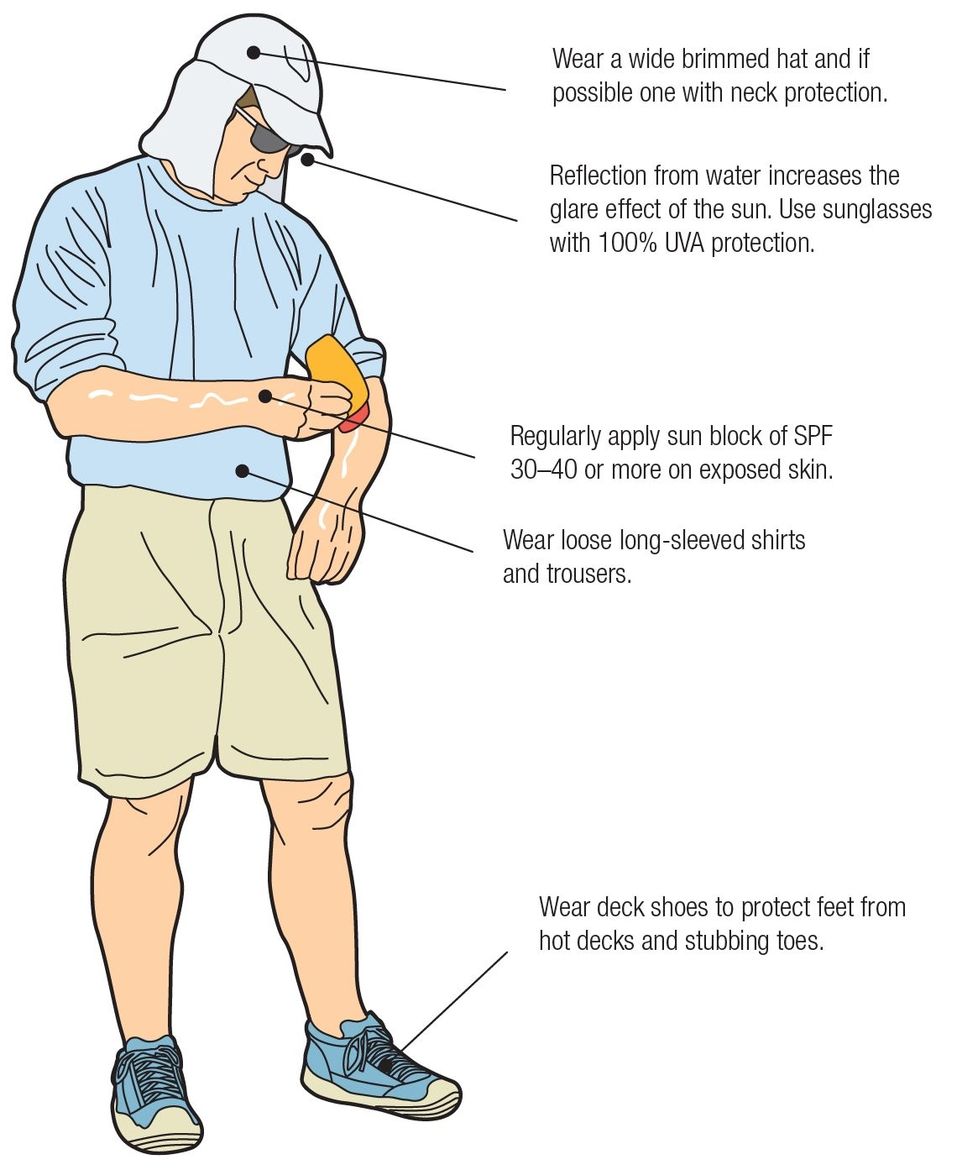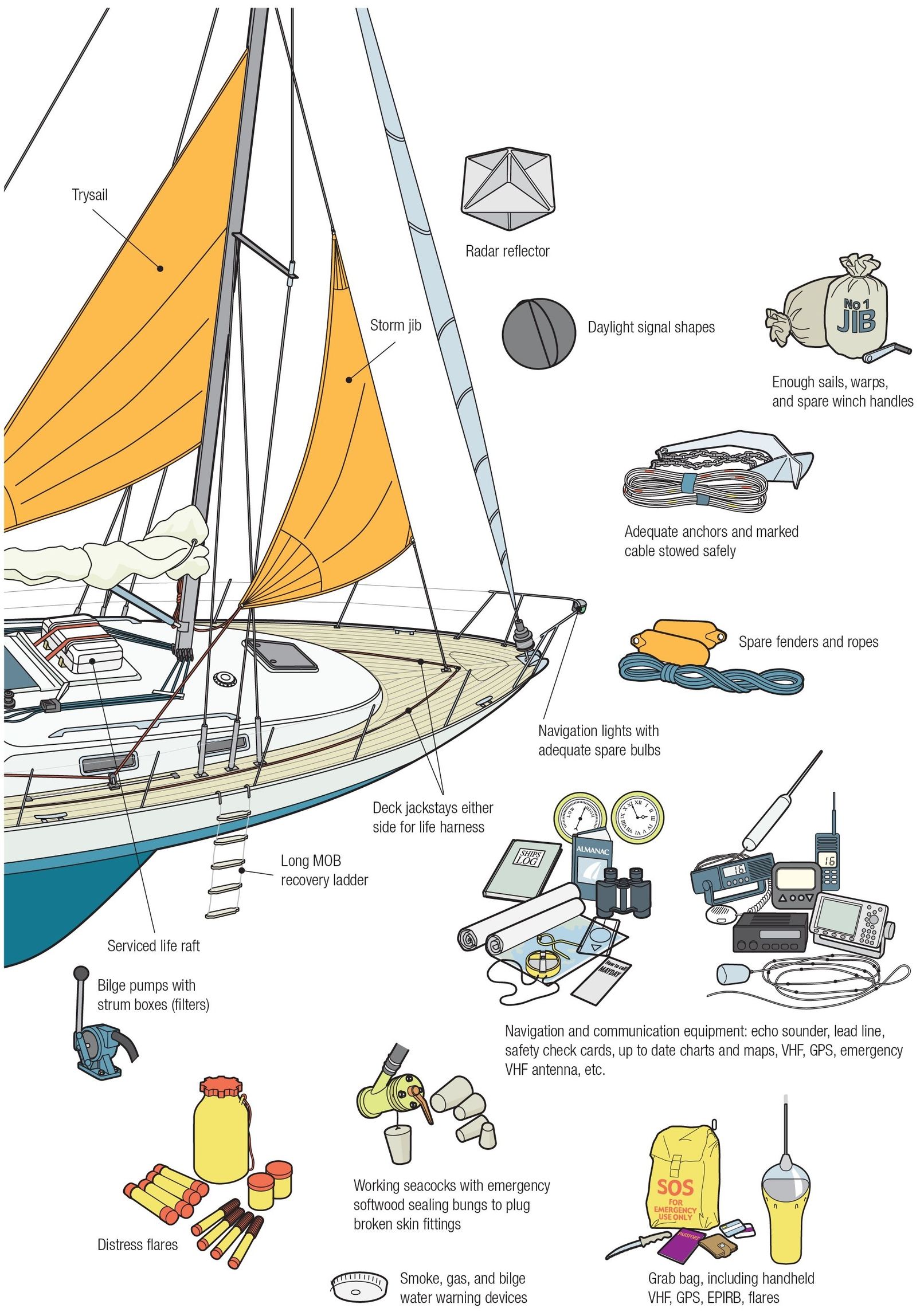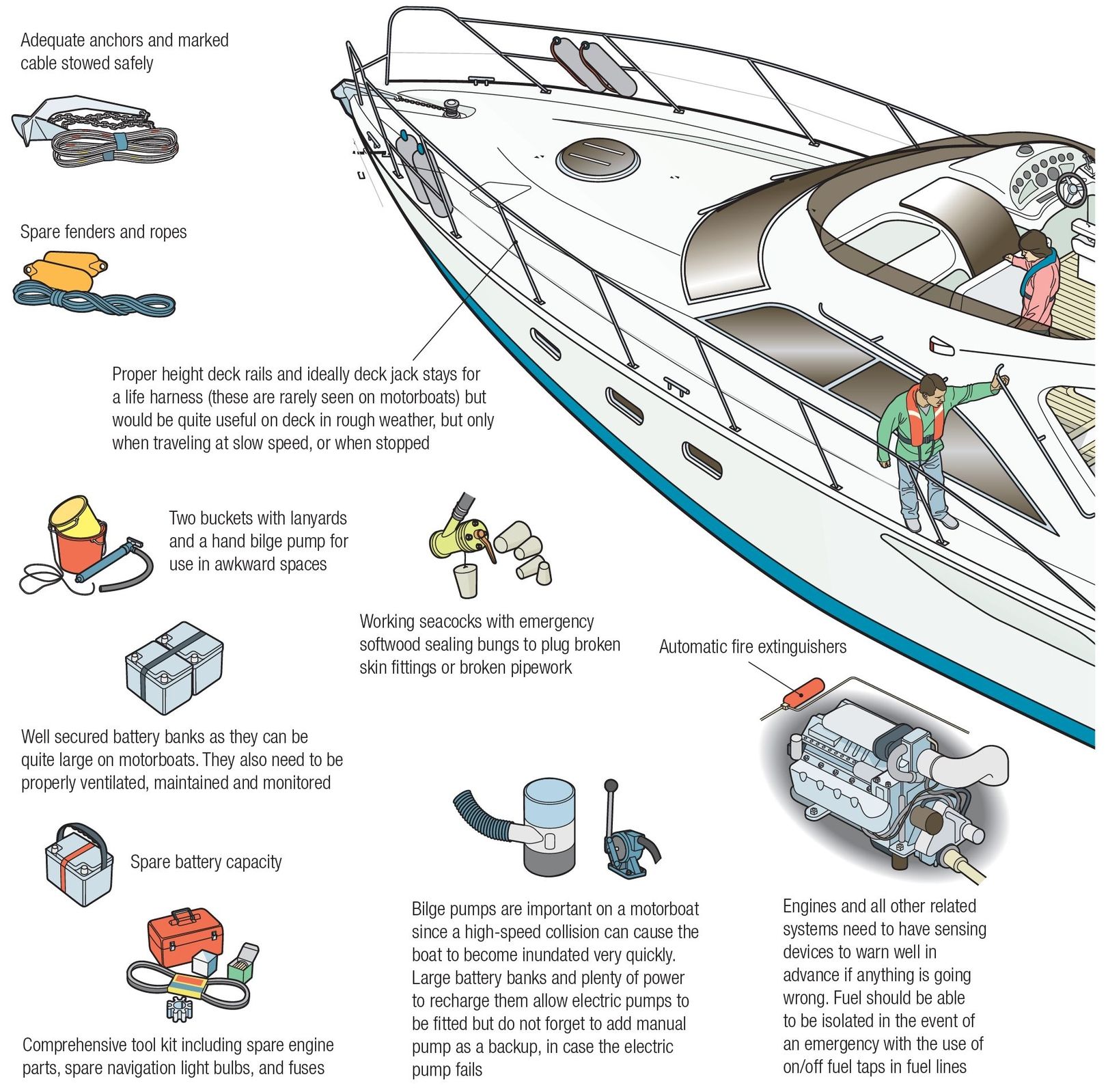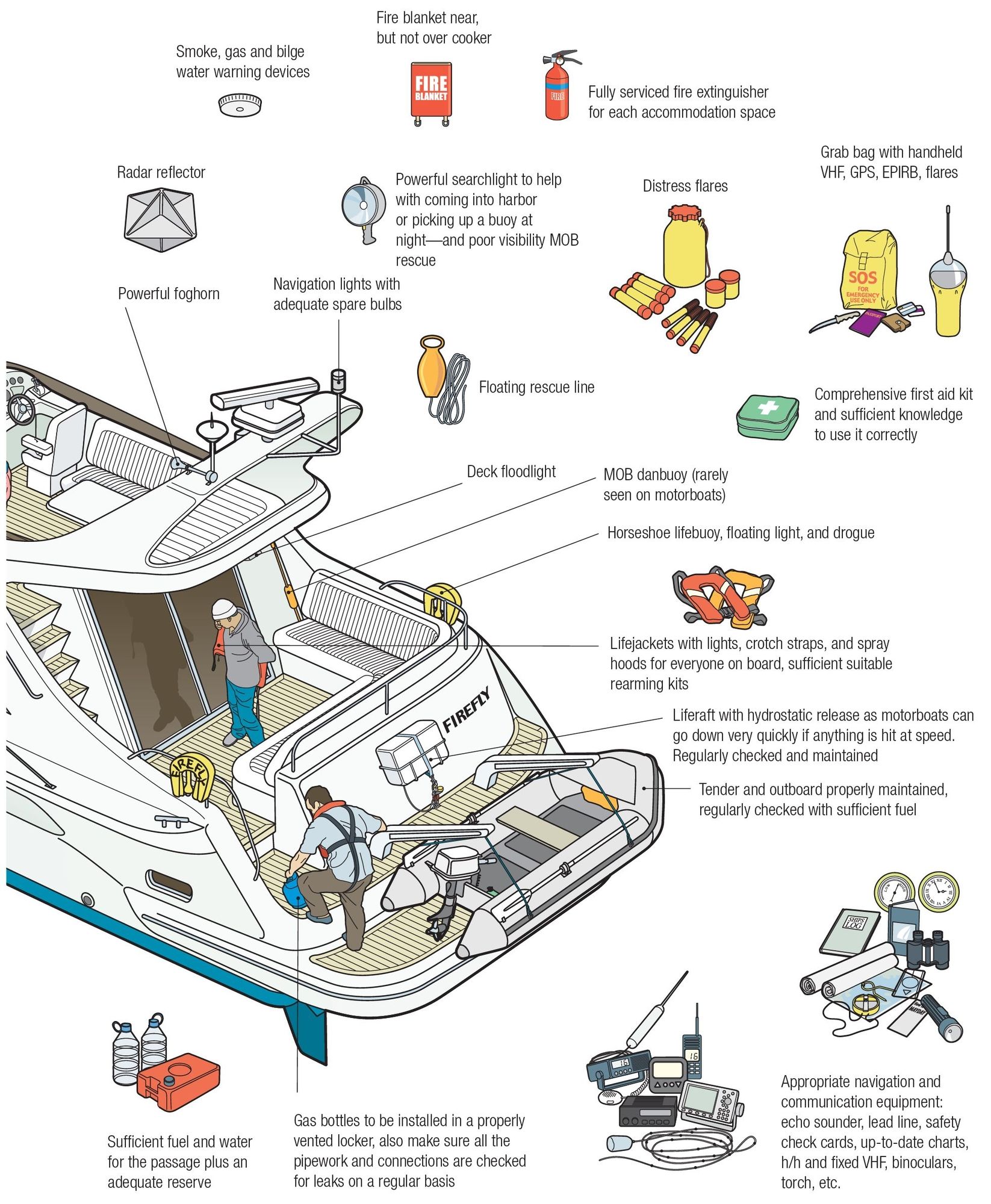CHAPTER 1 : Before you go out
Check the weather forecast and tides. Familiarize yourself with the area youre planning to sail. Are you and your crew sufficiently skilled for the planned trip? Tell somebody ashore where you are planning to go, when you expect to get there and how many people are on board. Let them know when you expect to arrive and what to do if you dont contact them to tell them of your safe arrival.
Many other countries have similar voluntary or compulsory registration schemes, so check if the country in which you keep your boat has a scheme and how you can join.
Safety brief
As skipper you should ensure that everyone on board knows where the safety equipment is stowed and how to use it. Talk them through your passage and pilotage as well as your contingency plan should something go wrong. Dont forget the less obvious safety equipment and procedures such as how to drop anchor or how to read your current position off the GPS or chart.
Are your crew familiar with boating? Is there anything you should know about them? Can they swim? Do they have medical problems that you need to be aware of, such as asthma, diabetes or angina? As skipper, their safety is your responsibility.
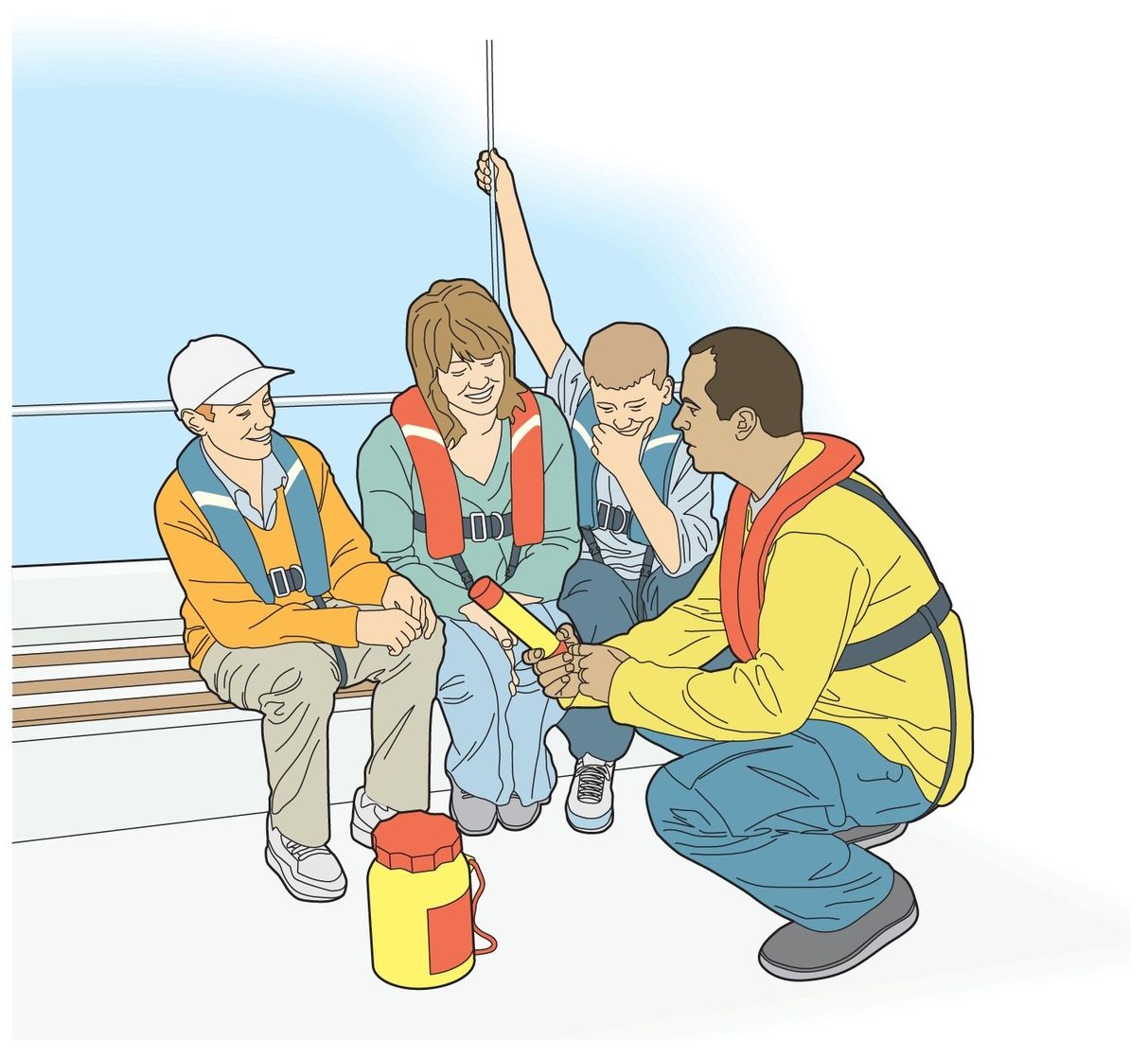
Safety brief checklist
| Lifejackets | Check condition, lights, when and how to don and inflate |
| Harnesses | When and where to clip on |
| Flares | Where stowed and how to fire |
| Liferaft | Where stowed and how to launch and inflate |
| Grab bag | Where it is, also other items such as water, food, etc. |
| Onboard hazards | Boom, winches, cleats, ropes, etc. |
| Anchoring procedure |
| How to start the engine |
| Lifebuoy/dan buoy |
| VHF radio | Mayday and DSC procedures |
| GPS | How to read off a position |
| Bilge pump | Where and how to use it |
| First-aid kit | Where it is kept |
| Fire extinguishers | Where, what type, and how to use them |
| Medicines | Are they taking any medication including anti-seasickness tablets |
| Clothing | Spare clothing, sunscreen |
| Lookout | Tell me what you see and hear; I may not have seen or heard it! |
| Passage Plan | Where we are going and contingency plans |
| MOB recovery equipment | Where and how to use it |
| Watch rota | When to call the skipper |
| Can they swim? |
| Medical or physical problems? |
VHF tip
Operating procedures for marine-band radios vary from set to set. Stick a prompt-card in a prominent position close to the set. Make sure the crew know not only how to switch on the radioincluding the correct switch on the distribution boardbut also how to use the DSC distress button (if fitted) and how to choose Ch 16 and transmit a Mayday.
Your MMSI number and call sign should be prominently displayed beside the radio.
Clear labels on lockers and a plan of where the safety equipment is stowed will save time and help reduce panic during an emergency. Place a copy on the door in the heads, where crew may find the time to study it!
Labelling will assist SAR (Search and Rescue) crew if they need to come aboard during a rescue.
Make a plan
Think about what can go wrong and how you can reduce the severity of an incident.
For example, ask yourself:
- What would you do in a range of emergencies?
- How would you go about abandoning ship?
- What you would do if somebody went overboard and how would you recover them?
- When should you fire flares or make a Mayday call?
- What is your contingency plan?
- Talk your procedures through and, where possible, practice them with your crew.
Clothing
Do you have the right clothing for the conditions? Take extra and spare clothing with you because conditions at sea are more hostile than on land.
Synthetic materials are better at wicking moisture away from the skin. Breathable waterproofs keep you warmer not only by keeping you dry from the outside but also by preventing moisture created by your body from becoming trapped inside the clothing.
Most marine clothing manufacturers now provide layer systems that are better at keeping you comfortable in a range of weather conditions.
In hot weather, protect yourself from the sun. UV light is reflected by the sea and will increase the possibility of sunburn. Use sun block or high-factor cream. Dont forget vulnerable areas such as tops of your feet, ears and the front of your legs. Long-sleeved shirts and broad-brimmed hats give added protection and wrap-around sunglasses reduce glare.
Recommended safety equipment for sailing yachts
The amount of safety gear you carry depends mainly on where you are planning to sail. Heres a selection of recommended equipment.
Before you start your voyage, leave details with a shore contact. Check requirements for all the countries you are sailing.
Equipment for motorboats
Mechanical failure is the main cause of problems in a motorboat. Ensure engines are regularly serviced and checked. Carry sufficient fuel for the proposed voyage. One of the main causes of crew accidents on a motorboat is the helmsman making a sudden maneuver without informing the rest of the crew, who can be thrown off their feet (or worse overboard). While motorboats will carry much of the same equipment as sailing boats, the lack of rigging and the dependence on mechanical power can bring specific problems.

